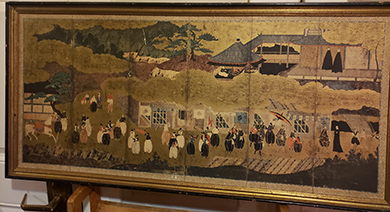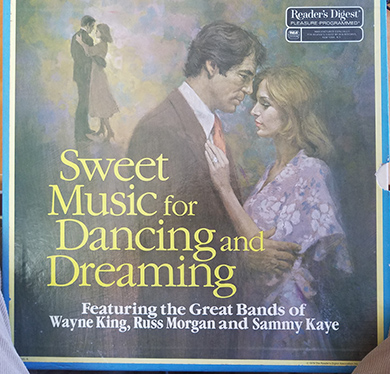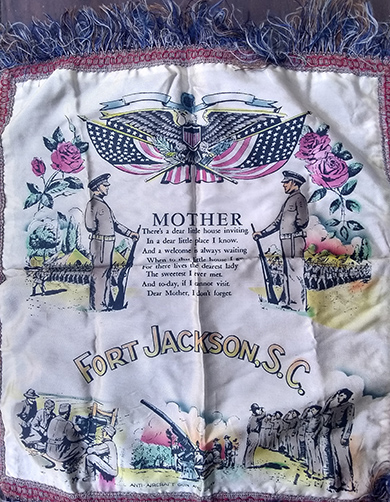 |
|
|||
 |
 |
|||
RINKER ON COLLECTIBLES — Column #1797 Copyright © Harry Rinker, LLC 2021 Questions
and Answers
QUESTION: I have a Hot Wheels Computer Cars Hydroplane in its period blister pack. The car is accompanied by a Windows’ compatible, interactive 3 1/2-inch collector’s hard disk. The disk contains a digital boat dock, a Spychase comic strip, and “Cool Collector Facts!” The back of the blister pack contains this information: “© 1995 Mattel, Inc., El Segundo, CA 90245 U.S.A. / MADE IN MAYLAIA.” The description of the Spychase Comic Strip reads: “Receive your top secret mission! / Chase the evil jewel thieves & bring them to justice! / Dodge the dangerous underwater mines!” What is the value of my Mattel Hot Wheels Computer Cars Hydroplane? – JK, King of Prussia, PA, E-mail Question 
ANSWER: Two points need to be made before exploring the history of Mattel’s Hot Wheels Computer Car series. First, most recent personal computers no longer have a 3.5-inch hard disk drive. My current Dell Inspiron 15 7000 is an example. I had to purchase a separate 3.5-inch hard disk drive so that I could read the dozens of 3.5-inch hard disk drives in my archives. Second, the mid-1990s was the golden age of Mattel Hot Wheels collecting. During this period, large numbers of collectors bought multiples of new Hot Wheels products and hoarded them. Although 25 years have passed since your Hydroplane first appear on the retail market, the secondary market is flooded with examples. In 1966, Mattel issued a series of six Computer Cars, each of which was accompanied by a 3.5-inch hard disk drive. The series include a 1966 Mustang GT (orange body), a ’93 Camaro (metal flake blue body), a Power Piston (yellow body), a Hydroplane (red body), Rigor Motor (metallic purple body with green chrome engine), and an Oscar Mayer Wienermobile (red and yellow body). There are slight differences between the cars as they appeared in the disk programs and their production appearance. The ’93 Camaro in the program has red wheels in the front and white wheels in the back. The production version has 5-spoke wheels. Removing the 3.5 hard disk from the period blister pack destroys the “complete” value of the blister pack. The good news is that information on the disks is available on YouTube and other websites. As indicated earlier, the secondary market is flooded with examples of the six Hot Wheels Computer Cars in their period blister packs. A “sale date” check on WorthPoint.com’s Worthopedia shows a sell through value on eBay and similar internet sites of between $5.50 and $7.50 per unit. Occasionally, an example brings more. Auction value is determined by the enthusiasm of bidders at a given moment of time. Individuals wishing to acquire one of these cars need only to set a “I will not pay more than this” limit and wait until they are the successful bidder for under that amount. Dealers in the field ask more. Spur of the moment buyers pay the price. Skilled buyers comparison shop and save money. QUESTION: I have a large framed print of a 17th century painting by an unknown artist depicting the Portuguese encountering the Japanese. The label on the back reads: “Anonymous Japanese Artist / (Early 17th Century) / PORTUGUESE VISITORS ARRIVING IN JAPAN / [same caption in French and Italian] / (Screen painting, colors with clouds in gold leaf on paper, 55 1/16” x 143”… / Rijksmuseum, Amsterdam.” The print has damage from wear and water. Can you tell me anything about it? Is it real? – DS, Email Question 
ANSWER: Of course it is real. If you are looking at it, it is real. Real like genuine and original are meaningless terms often used in the antiques and collectibles secondary market to imply a value that does not exist. Your print is a museum copy of a period painting. Although old, it has no value other than its decorative appeal. As the label indicates, the period painting is located in the collection of the Rijksmuseum in Amsterdam. I visited the Rijksmuseum on multiple occasions and must have seen the period painting, albeit I have no specific memory of it. Reproduction prints of this painting are available on numerous websites. Because of its large size, the image had been reduced. A 41” x18” print is available for $58.00 at Art.com. Kierrisdale Gallery sold a framed sheet size example (22 x 47.25 inches) in 2018 for $300.00 Canadian. You did not indicate the size of your framed print in your email. I assume it fits into one of the size ranges above. As a decorative item, your reproduction print is worth between $20.00 and $30.00. QUESTION: A friend has a collection of old records. One is a Readers Digest boxed album set entitled “Sweet Music for Dancing and Dreaming: Featuring the Great Bands of Wayne King, Russ Morgan, and Sammy Kaye.” The set has 8 long-playing 33 1/3 rpm records. Do these records have any value? – CL, Email Question 
ANSWER: Readers Digest issued the “Sweet Music for Dancing and Dreaming” album record set in 1979. During the 1970s and early 1980s, Readers Digest, along with a host of other record publishers, issued dozens of compilation record sets featuring popular mood music. Readers Digest sets included Great Music from the Movies, How Great Thou Art, It’s a Grand Night for Singing, Jukebox Saturday Night, Lawrence Welk Champagne Dance Party (And a one and a two? – I just could not resist), Pop Festival, Popular Music that Will Live Forever, and South of the Border. There was not a genre or appeal group that was not covered. Albums contained from 8 to 10 records. By the early 2000s, these albums were garage sale fodder. They sold at a dollar or two and languished at $5.00 or more. They are the epitome of schmaltz music. In a case of “what comes around goes around,” schmaltz apparently has returned to popularity as a result of the renaissance in 33 1/3 long-play vinyl records. A “sale date” search on Worthpoint.com’s Worthopedia revealed that when sold in lots, the Reader’s Digest records albums sell through between $8.00 and $9.00 a set on eBay and other internet sale sales. When sold individually, the price ranges from $12.00 to $20.00 depending on the genre. Shipping and handling add to the price. Concerned that this renaissance is temporary (at some point good taste should prevail once again) and age driven, my advice to anyone with Readers Digest and similar nostalgic, schmaltz record albums is to sell them now while the market is hot. QUESTION: I have several World War II, souvenir, silk, pillow covers with colorful fringes. One is from Fort Jackson, S.C. In addition to military images, it has a poem entitled “Mother.” The second has a blue ground, a spread-winged eagle emblem in the upper left, a diagonal banner with “U.S. Army,” and a poem entitled “Mother. The third has the emblem and words “8TH DIVISION, U S ARMY.’’ The fourth has a spread-winged eagle at the top / U. S. Army / [poem] Mother and Dad / and a marching column of soldiers. Do these have any value? – SD, Lansdale, PA, Email Question 
ANSWER: Condition is critical. The images that accompanied your email show these pillow covers have been folded in quarters for storage purposes. As a result, the folds left deep impressions in the silk. This is an invitation to disaster. The silk is fragile. It will separate at folds. You need to reduce and/or remove the fold marks. The two things you do not want to do is (1) wash these pillow covers or (2) iron the pillow covers. Purchase two large sheets of acid free board. Lay the pillow covers as flat as you can on a board and then place the second board on top. Apply weight to the top board. Over time, perhaps several months, the fold lines will disappear or almost disappear. Once this happens, take a cardboard tube and roll the pillow covers around it for storage purposes. Although extremely popular during World War II, especially as souvenirs from military training camps, advertising and souvenir silk pillow covers date back to the beginning of the 20th century. At one point, I had assembled a collection of over 50 of them. Like so many of my collections, it was sold in the early 2010s when the material from my Vera Cruz [PA] Elementary School Rinker Enterprises headquarters was dispersed at auction. Condition is critical. A “sale date” check on Worthpoint.com’s Worthopedia indicates most examples with simple, basic deigns sell through on eBay and similar internet auction websites between $14.00 and $16.00. Those with more complex designs range from $20.00 to $25.00. Examples featuring embroidered designs can exceed $50.00. Harry L. Rinker welcomes questions from readers about
collectibles, those mass-produced items from the twentieth and twenty-first centuries.
Selected letters will be answered in this column.
Harry cannot provide personal answers.
Photos and other material submitted cannot be
returned.
Send your questions to: Rinker on Collectibles, 5955 Mill
Point Court SE, Kentwood, MI 49512.
You also can e-mail your questions to
harrylrinker@aol.com.
Only e-mails containing a full name and mailing address
will be considered.
|
||||